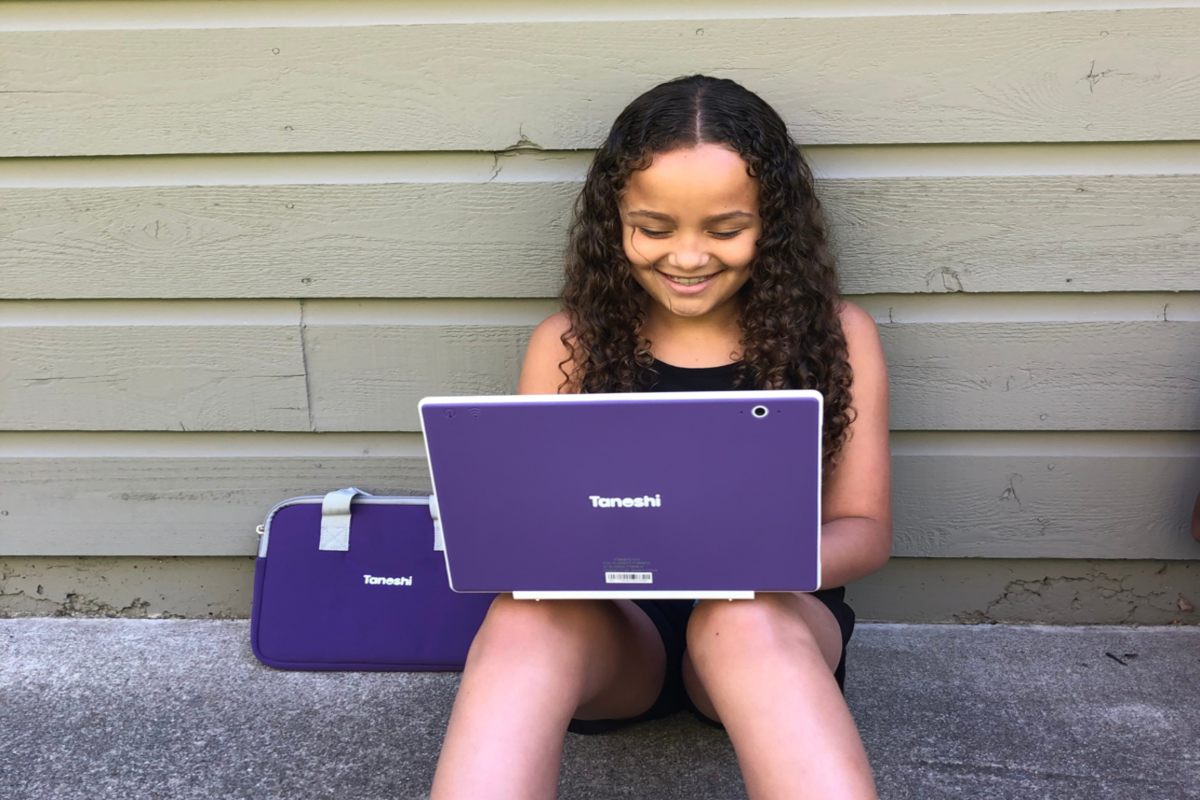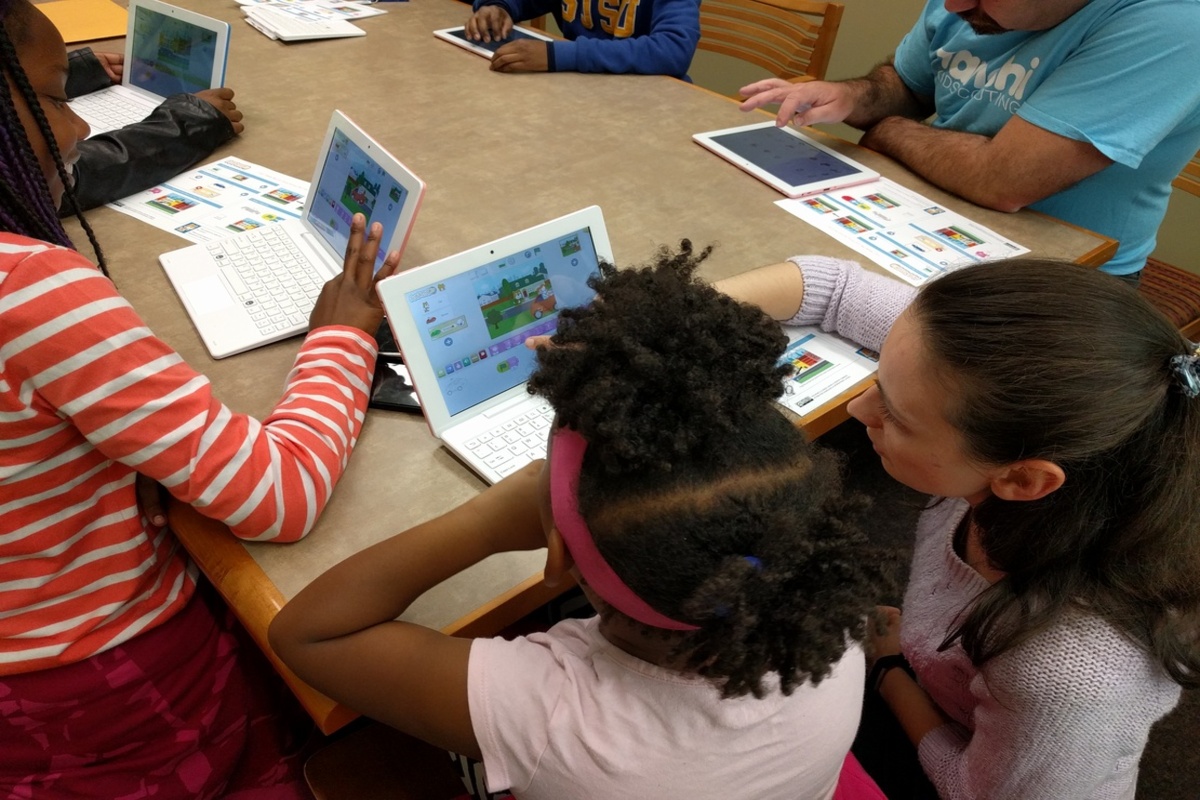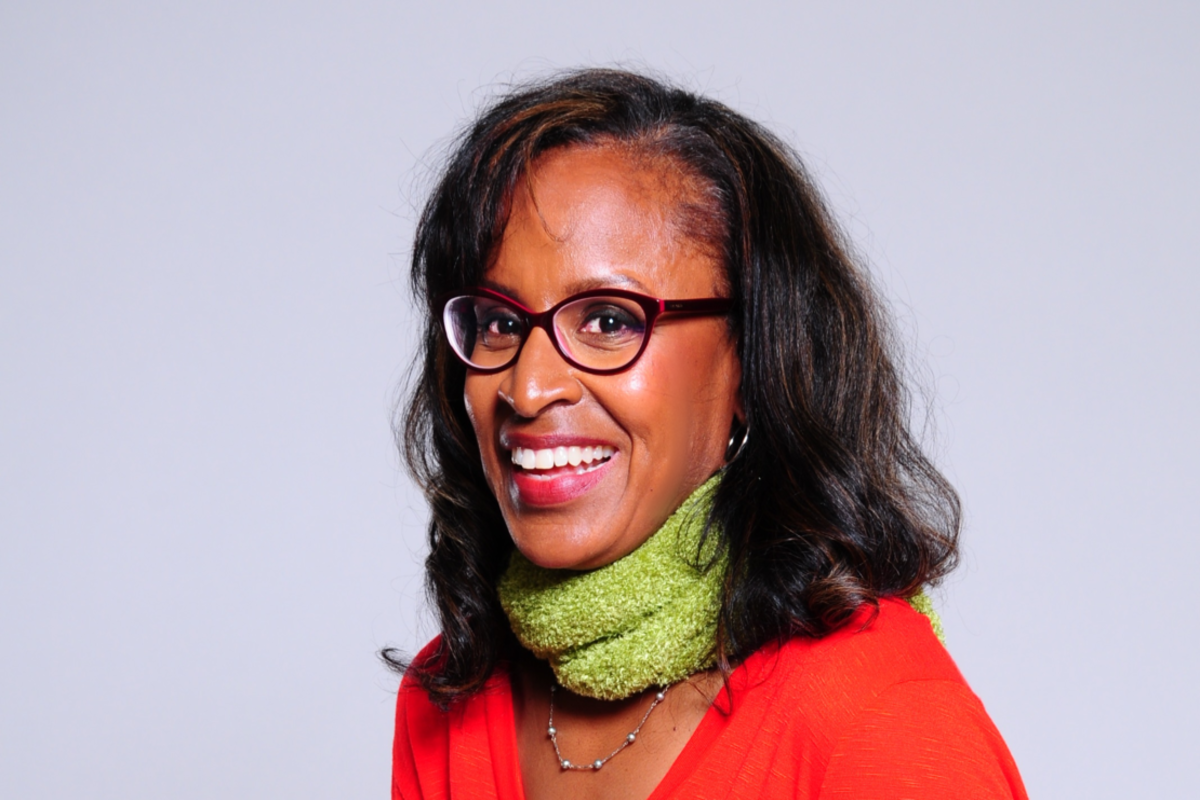“I’m in!”
These are undoubtedly the two most coveted words any contestant can hope to hear on the hit business reality TV series Shark Tank. The Co-Founder and Co-CEO of Tanoshi, Lisa Love, is one of the privileged few contestants to have heard them.
In 2020, the Ivy League-educated brand and retail marketing professional of 20 years, along with her two co-founders, Brad Johnston and Greg Smith, successfully pitched their first product – the Tanoshi 2-in-1 Kids Computer – to a panel of savvy Shark Tank investors.
Long-time “shark” Daymond John, affectionately known as “The People’s Shark” on the American edition of the primetime show, invested US$500,000 in the trio’s product, which had only been created a couple of years before.
Recognizing that children from lower-income neighborhoods aren’t necessarily afforded the same educational opportunities as children from more affluent backgrounds, Tanoshi focused on, in John’s words, “making education more accessible through the availability of affordable tech for kids”.
The Tanoshi 2-in-1 Kids Computer – essentially, a combined tablet and detachable keyboard – was manufactured and launched in 2018 to bridge this digital divide.
Reasonably priced at less than US$200 per computer, Tanoshi’s vision for its debut product was to level the playing field and give every child an equal opportunity to develop 21st century computer skills needed to excel in today’s school environment.
International Women’s Day 2023: #EmbraceEquity

The theme of International Women’s Day 2023 is #EmbraceEquity and, for Love, the meaning it holds for her lies in a shift she’s witnessed in recent years. “Ever since the tragic death of George Floyd in 2020, there’s been renewed energy around equity,” she says.
Ironically, 2020 was a stand-out year for Love. In addition to landing a sizable investment on Shark Tank, she was named one of the 100 Powerful Women of 2020 by Entrepreneur Magazine and one of the Top 100 Women Entrepreneurs of 2020 by Inc. Magazine.
Love points out that “it’s important to note that diversity, equity and inclusion doesn’t actually mention equality. Oftentimes, people use the terms ‘equality’ and ‘equity’ interchangeably, but they’re actually quite different.”
She draws a distinction between the two terms. “Equality affords everyone the same opportunity, regardless of where they started in life. By contrast, equity takes into account a person’s history and that they may be starting at a relative disadvantage to the next person,” she explains.
“For me, #EmbraceEquity is knowing that everyone’s situation is unique, yet welcoming differences and providing a path to success based on these differences.”
“Equality affords everyone the same opportunity, regardless of where they started in life. By contrast, equity takes into account a person’s history and that they may be starting at a relative disadvantage to the next person.”
United Nations: “Achieving gender equality is the … greatest human rights challenge in our world.”

According to the United Nations Secretary-General António Guterres, “achieving gender equality and empowering women and girls is the unfinished business of our time, and the greatest human rights challenge in our world.”
Fully cognizant of the sheer weight of this challenge, Love nevertheless pinpoints three areas that need to change in order to achieve gender equality. “The first is equal pay for equal work. If women are doing the same work as men and producing the same outcomes, there’s no reason for them to be paid 20 percent less than men,” she says.
“Secondly, there should be greater female representation at the policy level. We should appoint more women who can influence and initiate change within government.
“Thirdly, gender bias should be removed from education. According to ConcernUSA.org, 130 million girls around the world will never experience being in a classroom. Any kind of meaningful change starts with education,” she explains.
“If women are doing the same work as men and producing the same outcomes, there’s no reason for them to be paid 20 percent less than men.”
The current challenge: Closing the gender pay gap
The Global Gender Gap Report 2021 shows the estimated time needed to close the global gender pay gap has increased from 99.5 years to 135.6 years.
Love is convinced that male allyship must play a central role in closing the gender pay gap. “Since we live in a male-dominated society, where men hold the majority of leadership and decision-making roles, it’s critical that, if we want to close the gender pay gap, we have their full support,” she says.
“Men must first realize and admit that a problem exists and that the gender pay gap is real. The next step is to get their buy-in, so they’ll want change to happen. This means more education about how equal pay benefits everyone, including how it can reduce poverty since women are often the breadwinners in the family.
“Another benefit of equal pay is a boost in the economy. Of all consumers, women spend the most. When they’re paid less, their spending is limited, which impacts the economy. The bottom line is, once more men take action, the closer we’ll be to equal pay for all.”
“Once more men take action, the closer we’ll be to equal pay for all.”
The final frontier: Tackling the digital gender gap

This year’s International Women’s Day focuses on the impact of the digital gender gap on widening economic and social inequalities.
Given Love’s experience developing initiatives to help close the digital divide among young children, she fervently believes that, to close the digital gender gap, we must garner girls’ interest in technology and computer science from an early age.
“At Tanoshi, we especially hope to inspire more girls to want to develop and utilize computer science skills,” she says. “This way, when it’s time for them to enter the workforce, they’ve been exposed and feel comfortable and confident working alongside a majority of men in this space.”
Love maps out an ambitious three-point plan, which Tanoshi has actioned, to help close the digital gender gap.
1. Product
Love’s brainchild, Tanoshi, specifically targets girls aged six-to-12 by designing computer products that are aesthetically pleasing to them. “This could mean something as simple as creating a pink computer, a color that, statistically, is well liked by many girls in that age group,” she says.
“Then, we pre-load a coding app aimed at young girls. In the Nancy Drew Codes & Clues kids coding app, children use coding to help the main character, Nancy Drew, solve mysteries.”
2. Packaging
“We also focus on young girls in our marketing materials,” Love says. “We’re very intentional about including their images in most of our emails, social media posts and packaging.”
3. Professional
One could be forgiven for thinking that Love’s entrepreneurial pursuits in the education-technology space were written in the stars.
Her mother was an educator who taught in South Central, Los Angeles, and Love observed her turmoil witnessing many of her students fall behind academically. She also became acutely aware of the systemic challenges her mother faced when attempting to elevate her students to grade level.
Meanwhile, Love’s father worked as an electrical engineer at IBM so, at the same time, she was raised seeing the advantages of technology generally and, more specifically, the benefits of using a computer.
But Love appreciates that not every young girl is fortunate enough to be born into a nurturing environment where the stars seem so perfectly aligned. For this reason, once a young girl starts showing a healthy interest in technology, she says it’s “crucial that she has a female mentor – a seasoned professional who can help guide and inspire her on her journey”.
“It’s crucial that [a young girl] has a female mentor – a seasoned professional who can help guide and inspire her on her journey.”
International Women’s Day: Will we always need it?

International Women’s Day has been marked ever since the early 1900s, when tens of thousands of women started boldly marching through the streets of New York City to demand shorter working hours, improved pay and the right to vote.
Can Love foresee a time when gender parity becomes the norm and there’s no longer a need for International Women’s Day? “We’ll continue to make improvements and some years will be better than others,” she says tentatively. “But unfortunately, I think it’ll be decades before gender parity becomes the norm – not in my lifetime.”
Moreover, Love believes there will always be a place for International Women’s Day for reasons beyond closing the digital gender gap and striving for gender equality. “Once gender parity does become the norm, I still believe there will be a need for International Women’s Day because we must never forget ‘HERstory’.”
“Once gender parity does become the norm, I still believe there will be a need for International Women’s Day because we must never forget ‘HERstory’.”
Pitch perfect: Three pitching tips from a Shark Tank winner
Given that Love co-owns a successful Shark Tank investee company, it would be remiss of us to not ask her advice to someone pitching for investment. Here are her three top tips.
1. Research the potential investor
When it comes to seeking investment, Love’s mantra is “research, research, research”. She offers the following advice to investment seekers: “When pitching your idea to a potential investor, always find out who you’re presenting to. In other words, research them.”
2. Interview the potential investor
Insofar as meeting a potential investor is concerned, Love strongly encourages investment seekers to “interview them in the same way they interview you”.
She elaborates: “What types of companies do they generally invest in? How much money do they typically invest? If possible, reach out to a couple of companies in their portfolio and get their perspective on the investor.”
3. Align your company’s goals with the potential investor
Love cautions investment seekers against short-term thinking. “Once you sign a deal with an investor, it’s like a marriage,” she says. “You’re in bed with them for the long haul. So, you want to ensure that you not only get on with the potential investor, but also make sure that you both have the same long-term goals for the company.”
Shark Tank changed one company’s future (and many children’s futures)
For Love, 6 May 2000 is a date that will be forever etched in her memory. It’s when a life-changing US$500,000 Shark Tank investment changed the trajectory of her company’s future.
But more than that, it was the day when Love realized, for the first time, that she could potentially empower an entire generation of children, particularly young girls, with a rousing message – that, with curiosity in computers and an equal level of commitment to them, they can create their future at their fingertips.







